

Click on the thumbnail photograph or underlined
text to see the picture in greater detail.
Links will work faster if you allow the entire page to load.
Page 2 of 2
Chalcatzingo II |
| |
View of Cerro Chalcatzingo (right) and Cerro Delgado (left). |
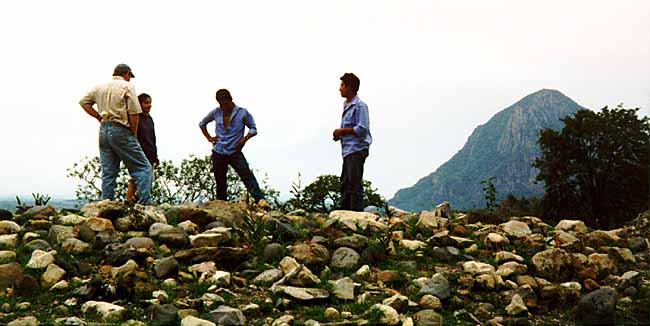 |
On a beautifully clear day, archaeologist Maria del Rocio Aviles (center left) and her husband Dr. Cameron Wesson (far left) are joined by two of Chalcatzingo's caretakers on top of the site's principle mound. Aviles, from the University of Illinois, has been working with David C. Grove on the early formative component at Chalcatzingo for the past two years. They will be conducting further excavations there in the spring of 1998. |
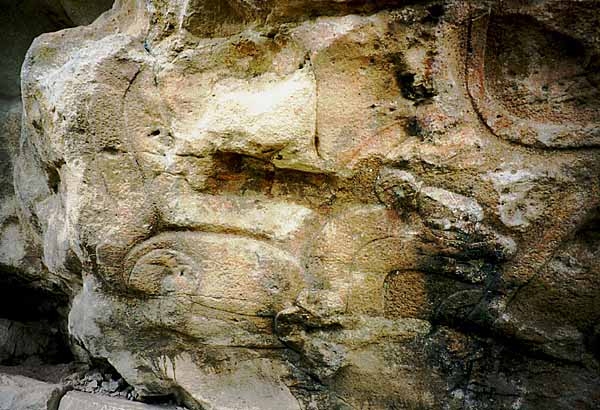 |
In the 1950's, fiberglass molds were made of Chalcatzingo's most impressive carvings. Many of the results can be seen in the National Museum of Anthropology in Mexico City. Unfortunately, fiberglass residue has stuck to the rock face and cannot be removed without great expense and risk. Because of the residue, many details of these carvings are difficult or impossible to see. Here, the feline in monument 3 is pouncing on a human wearing an Olmec mask, a detail which went unnoticed until the seventies. |
| |
Monument 5 depicts a serpentine creature devouring a human. The creature is curiously marked with what appear to be fins or wings, an elongated snout with large teeth and fangs, and triangular markings towards its tail. Various authors have viewed this scene as a symbol of sacrifice, or of a celestial event. |
 |
Monument 8 is one of many carvings which depict a small reptilian or amphibian creature issuing what are likely cloud scrolls into the sky. They are all carved in very low relief, monument 8 being one of the best for photographs. |
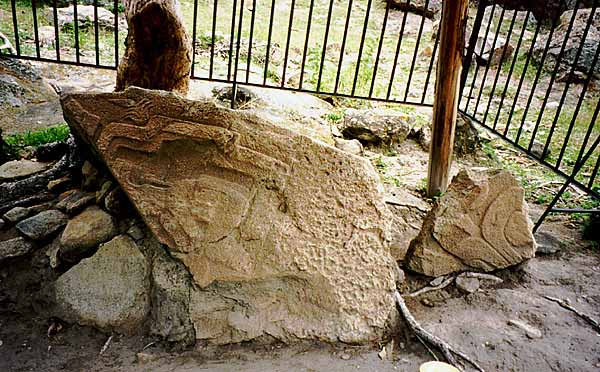 |
Monument 13 can be interestingly compared to "El Rey" (mon. 1). It depicts a seated person within the open mouth of the earth monster. Vegetation is growing from the corners of the opening. The person is wearing an Olmec costume, or is marked as an Olmec supernatural. Less than half of the sculpture has been found, and it is currently leaning to the left under a shelter provided by INAH. Another piece of the work, found years later than the first, can be seen in the right-hand side of the photograph. |
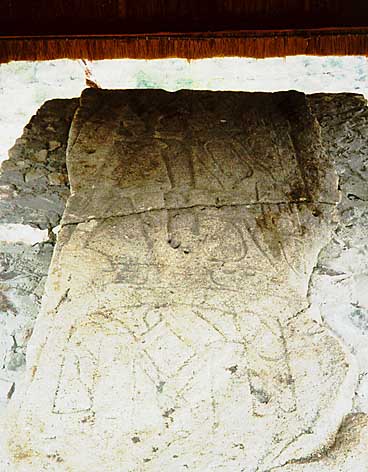 |
Monument 21 is extremely large and hard to photograph. It stands tilted back under a protective roof constructed by INAH. The monument depicts a woman making a gesture with her arms next to a large and intricate rectangular design. These two elements stand upon a panel carved with geometric designs, possibly indicating the earth and/or a stylized mask. Recently Aviles discovered another monument which mimics this imagery, except the new monument depicts a male figure making the same gesture. |
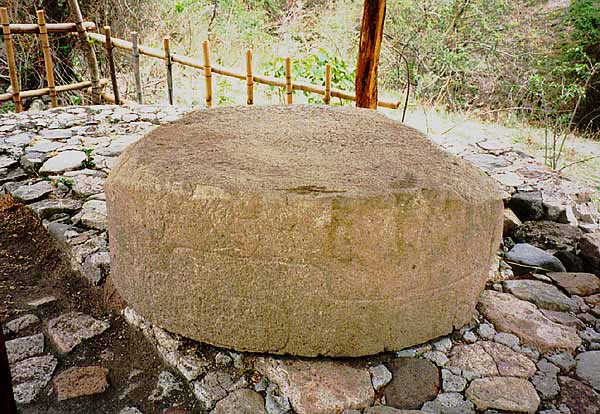 |
Monument 25, a round altar, was found next to the broken stub of a stela. The altar is uncarved on its top and bottom, but has lines and motifs engraved around its circumference. This is the oldest known example of the stela altar complex that would later become widespread in Mesoamerica. |
| |
Structure 1 on terrace 6 is a raised platform with four middle formative construction phases. It is rare to have found this stone faced platform dating to the middle formative, when monumental architecture in Mesoamerica was still in its infancy. It is even rarer still to have found a stela standing in situ in front of the platform (see next photo). |
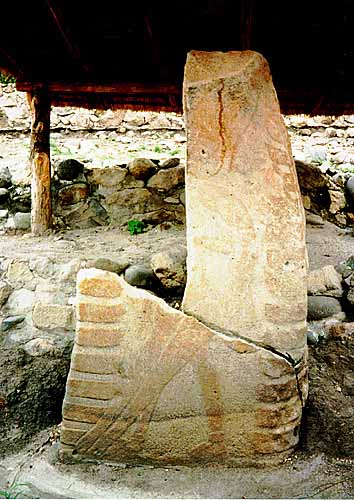 |
Monument 27 was found in situ, broken near the base, and lying at around a forty-five degree angle back towards the platform. The carving depicts a person wearing or carrying an animal, carved with long slender legs and oblong markings on its hide. The oblong markings which appear on other monuments, such as monuments 21 and 25, may also be symbols to represent animal hides. |
Chalcatzingo II |